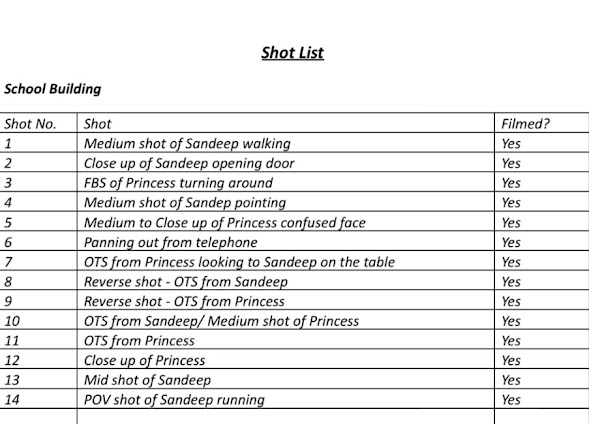Postmodernism & Deutschland 83: blog tasks
Media Magazine - A Postmodern Reimagining of the Past
Media Magazine 73 has a feature exploring Deutschland 83 as a postmodern media product. Read ‘Deutschland 83 - A Postmodern Reimagining of the Past’ in MM73 (p18). You'll find our Media Magazine archive here - remember you'll need your Greenford Google login to access. Answer the following questions:
1) What were the classic media representations of the Cold War?
The Cold War was often portrayed in media as a battle between good (the capitalist West) and evil (the communist East).
Media often used propaganda to depict the USSR as oppressive, while the West was shown as free and democratic.
2) Why does Deutschland 83 provide a particularly good example for postmodern analysis?
It blurs historical and fictional elements, creating a nostalgic version of 1983.
The show uses intertextual references to Cold War-era media, music, and pop culture.
It challenges the traditional binary of good vs. evil by offering a more nuanced portrayal of both East and West.
The show’s use of pastiche, irony, aligns with postmodernism.
3) Pick out some of the aspects of the opening of episode 1 and explain why they are significant.
The use of 1980s pop music immediately establishes a nostalgic yet ironic tone.
The juxtaposition of East and West through split-screen visuals highlights the divide.
.
The focus on surveillance and control in East Germany sets up themes of restriction and deception.
4) How does the party scene at Martin's mum's house subvert stereotypes of East Germany in the Cold War?
Instead of a bleak, oppressive environment, the scene shows East Germans enjoying Western music, alcohol, and fashion.
This contradicts the traditional portrayal of East Germany as a repressive and joyless society.
It highlights the cultural crossover between East and West, challenging rigid ideologies
5)What aspects of the episode set in West Germany offer postmodern elements?
The consumerism, bright colors, and pop culture references create a hyperreal version of West Germany.
The contrast between Martin’s military background and the relaxed, Western lifestyle adds irony.
The use of American pop culture reflects Baudrillard’s idea —West Germany is depicted as a constructed image of Western ideals rather than a historical reality.
6) Finally, how does the article apply postmodern theory to Deutschland 83 and link it to the potential target audience?
The show appeals to a modern audience by reinterpreting Cold War history through a contemporary lens.
It uses nostalgia and intertextuality to engage viewers who recognize the references but also question their authenticity.
Younger audiences, unfamiliar with the Cold War, may view it as a thriller rather than a historically accurate text..
Go to our Media Factsheet archive on the Media Shared drive and open Factsheet #54: Introduction to Postmodernism. Our Media Factsheet archive is on the Media Shared drive: M:\Resources\A Level\Media Factsheets. If you need to access this from home you can find our factsheet archive here (you'll need to use your Greenford
2) What is Fredric Jameson's idea of 'historical deafness'? How can the idea of 'historical deafness' be applied to Deutschland 83?
News is increasingly entertainment-driven, with real events presented like films or TV shows.
Reality TV blurs the line between fact and fiction.
Political events are mediated through social media, turning them into spectacle rather than serious discourse.
3) What examples and theories are provided for the idea of 'style over substance'?
Advertisements often focus more on aesthetics than meaningful content.
Reality TV prioritizes spectacle over authenticity.
Deutschland 83 uses fast-paced editing, neon lighting, and nostalgic music to create an exciting atmosphere, sometimes at the expense of depth.
4) What examples from music are provided for the breakdown of the distinction between art and popular culture? Can this be applied to Deutschland 83?
Music genres like hip-hop and punk mix high and low culture, incorporating political messages into mainstream formats.
Deutschland 83 applies this by mixing serious Cold War politics with pop culture references, making history feel more like entertainment.
5) What is bricolage? What examples of bricolage can be found in Deutschland 83?
Bricolage is the mixing of different styles and influences to create something new.
The show blends historical footage with fictional drama.
The soundtrack combines East and West music, showing cultural crossover.
The costumes and set design mix authentic 1980s aesthetics with exaggeration.
6) How can the audience pleasures of Deutschland 83 be linked to postmodernism? Read 'The decline of meta-narratives' and 'Media texts and the postmodern' to help answer this.
Nostalgia: The 1980s setting and music appeal to older audiences.
Intertextuality: References to Cold War spy films and pop culture make it engaging.
Irony: The show plays with historical representations, making audiences question reality vs. fiction.
Hyperreality: It presents an exaggerated version of history, making it more entertaining than informative.
7) Now look at page 4 of the factsheet. How does Deutschland 83 demonstrate aspects of the postmodern in its construction and ideological positioning?
It challenges narratives about the Cold War, presenting both sides as flawed rather than a simple good vs. evil battle.
It blurs historical accuracy with fictional storytelling.
It uses pastiche, parody, and intertextuality to construct meaning.
8) Which key scenes from Deutschland 83 best provide examples of postmodernism? Why?
Opening scene: The exaggerated East/West contrast, use of pop music, and nostalgic visuals.
Party scene at Martin’s mum’s house: Subverts Cold War stereotypes.
First arrival in West Germany: Highlights hyperreality through consumerist spectacle.
Spy training scenes: Blend realism with action, questioning authenticity.

Comments
Post a Comment